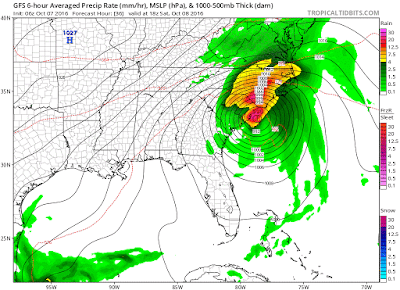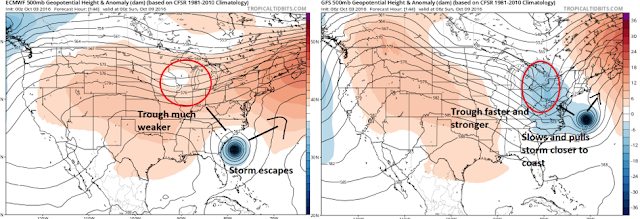This post might get a little detailed. I will also be cutting a video this week to break it down in a more understandable fashion.
Lets take a look..
All maps below show areas of high and low pressure/warm and cold air. This also represents the positioning of the jet stream. Remember the jet stream acts as a barrier between warm and cold air so as it rises warm air raises with it and as it dips cold air filters down from the north.
Starting this week, you can see a high pressure ridge builds over the east. This gives us the warm temperatures Wednesday and Thursday..
As we enter the weekend a pesky little trough of low pressure dip down into the northeast. This kills the heat and brings things back on the chilly side. Notice the central US stays very warm but that sharp amplitude of the jet in the central states along with the riding over Greenland (negative NAO pattern) causes this dip over the east.
As we enter week two, things really start to transition. The ridge begins to pull to the west which will open the floodgates for shots of cold air to filter into the eastern 1/3..
In the longer range this pattern only amplifies with a trough south of Alaska, big ridge out west, trough in the east and ridge over Greenland. I marked all these features to make it easy to understand. Bottom line, this pattern means business! I expect everyone to notice the changes as we hit week 2...
You can see all the features labeled above as we hit the long range. This is merely an ensemble mean meaning it averages many different model members as to where the areas of high and low pressure will be. Since it is an average, the images gets diluted at times as some members might have a trough where there is a ridge vice versa. Every major model is showing this pattern however. If you also couple this with the weak polar vortex we have been observing, the cards are aligning for a very wild period in the long range.
Currently the polar vortex is ALMOST in a split pattern. This is very rare for this time of year. There is a delayed response from what happens up in the stratosphere, from the vortex splitting, to its effects on the troposphere. That delay is usually 2-3 weeks. Currently we have a vortex that is split (unbelievable)...
This can have big implications in locking in a cold pattern if verified.
Bottom line: Buckle up, we have a period of wild weather on tap from week 2 of November and beyond.
I will have a video on all of this this week as it can get complicated to explain over a text post.















































